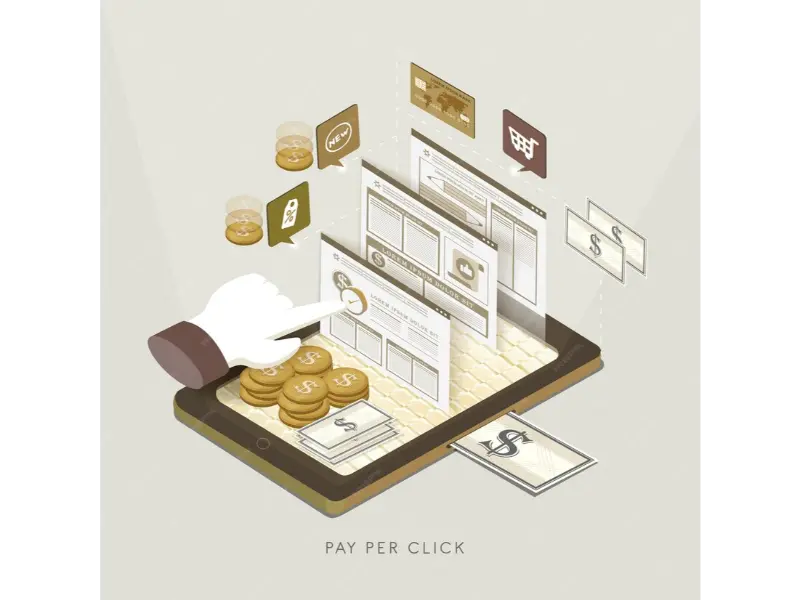- Private credit refers to non-bank loans provided directly to companies, offering higher yields but with higher risks compared to traditional bank loans.
- The asset class is gaining popularity among institutional investors, driven by demand for alternative investments and higher returns in a low-interest-rate environment.
Private credit has been rapidly gaining attention as an alternative investment class, drawing interest from institutional investors, high-net-worth individuals, and even retail investors looking to diversify their portfolios. But what exactly is private credit, and why has it become such a hot topic in the world of finance? In this comprehensive guide, we’ll explore the concept of private credit, its various forms, benefits, risks, and how it compares to other types of investments.
Also read: Private Credit: The fintech engine driving growth, or a looming risk?
Also read: Digital bank Onyx Private shuts down retail services, shifts focus to B2B
What is private credit?

Private credit refers to non-bank lending, where loans are provided directly by private lenders to companies, often in the form of debt instruments such as loans, bonds, or other credit products. Unlike traditional bank loans or public debt securities traded on financial markets, private credit is typically not listed on public exchanges and involves more direct negotiations between the borrower and the lender.
In the private credit space, lenders typically engage with businesses in need of capital to fund expansion, acquisitions, or operational needs. These lenders could be private equity firms, hedge funds, or specialized credit managers, as well as institutional investors like pension funds or insurance companies.
As David Rubenstein, co-founder of Carlyle Group, notes, “Private credit is becoming an increasingly important part of the capital markets because it provides an alternative to bank lending, particularly in a low-interest-rate environment.”
One of the defining characteristics of private credit is its lack of liquidity. Since these investments are not traded on public markets, it can be more difficult for investors to sell their positions before the loan reaches maturity. Julie Poon, managing director at Blackstone, adds, “The lack of liquidity is a trade-off for the higher yields that private credit offers, and it appeals to investors who are looking for stable, long-term returns.”
Private credit is becoming an increasingly important part of the capital markets because it provides an alternative to bank lending, particularly in a low-interest-rate environment.
David Rubenstein, co-founder of Carlyle Group
Also read: What is a fintech company?
Also read: What is cybersecurity?
How private credit works

Private credit operates in much the same way as traditional lending but without the involvement of traditional financial institutions like commercial banks. Typically, a borrower seeks financing for a specific purpose and negotiates with private lenders for the terms of the loan. Private credit deals are often structured as customized, bespoke agreements, and the terms may vary significantly from one deal to another.
The process typically involves the following steps:
- Origination: A borrower approaches a private credit fund or a direct lender to secure a loan. The lender conducts due diligence on the borrower to assess their creditworthiness and the purpose of the loan.
- Negotiation: After due diligence, both parties negotiate the terms of the loan, which include the interest rate, repayment schedule, and any collateral required to secure the loan.
- Issuance: Once terms are agreed upon, the lender disburses the funds to the borrower, who begins making regular interest and principal payments over the loan term.
- Repayment: The loan is repaid according to the agreed-upon schedule, and once the loan term ends, the lender recoups the invested capital, along with any agreed-upon interest or returns.
Private credit is attractive because it allows for more flexibility and often higher yields compared to traditional forms of debt. However, it also entails higher risks, such as default risk and liquidity risk.
Also read: Intel faces credit downgrade from S&P Global due to struggles
Also read: AWS pledges $100M in cloud credits to boost education
Types of private credit

Private credit encompasses a broad range of loan structures and types, each offering unique features and benefits for both lenders and borrowers. Let’s explore the major types of private credit investments:
Direct lending
Direct lending is one of the most common forms of private credit. In this model, private lenders or credit funds provide loans directly to companies, typically middle-market businesses. These loans may be used for a variety of purposes, such as financing acquisitions, refinancing existing debt, or funding business expansion.
Direct lending deals are usually secured by assets, such as property, inventory, or accounts receivable. The interest rates on direct lending loans tend to be higher than those of traditional bank loans, reflecting the increased risk involved.
“Direct lending is an attractive alternative for borrowers looking for more flexible terms than those offered by traditional banks,” says David Rubenstein, co-founder of Carlyle Group. “It also provides private credit investors with attractive yields, particularly in the current low-interest-rate environment.”
Distressed debt
Distressed debt refers to loans or bonds issued by companies experiencing financial difficulties. These companies may be in default or on the brink of default, making distressed debt a high-risk investment. However, the potential for high returns is also greater, as investors may be able to buy distressed debt at a significant discount and potentially profit if the company recovers.
Investing in distressed debt requires specialized knowledge and expertise, as it involves a thorough understanding of bankruptcy law and the financial condition of distressed companies.
“Distressed debt investing is a high-stakes strategy that requires deep financial and legal expertise,” explains Julie Poon, managing director at Blackstone. “But for those who understand the complexities, it offers significant opportunities to acquire undervalued assets and generate substantial returns.”

Structured credit
Structured credit involves the creation of complex financial products backed by pools of debt. These products are often structured as collateralized debt obligations (CDOs), which are securities backed by a portfolio of loans or other credit instruments.
Structured credit allows investors to gain exposure to a diversified portfolio of loans and credit assets while managing the risk of individual credit defaults. These instruments are typically used by institutional investors to gain access to more complex credit markets.
“Structured credit offers institutional investors the ability to diversify their portfolios while managing risk,” says John Collison, senior portfolio manager at PIMCO. “By pooling multiple assets, these products can offer a balance of risk and return that meets the investment goals of sophisticated investors.”
Mezzanine financing
Mezzanine financing is a hybrid form of financing that combines elements of debt and equity. It is typically used to fund the growth or expansion of a business, often in conjunction with other forms of financing like senior debt or equity investments.
Mezzanine loans are subordinate to senior debt in the capital structure but senior to equity, meaning they carry higher risk than senior loans but offer the potential for higher returns. It often come with warrants or equity kickers, allowing the lender to participate in the company’s growth if it succeeds.
“Mezzanine financing provides an important source of capital for businesses looking to expand,” states Michael Dubose, CEO of a private equity firm. “It strikes a balance between debt and equity, allowing companies to access growth capital while providing lenders with the potential for significant returns if the company succeeds.”
Distressed debt investing is a high-stakes strategy that requires deep financial and legal expertise.
Julie Poon, managing director at Blackstone
Also read: Google makes first purchase of nature-based carbon credits from Brazilian startup
Also read: JPMorgan targets Apple credit card deal
Benefits of private credit

Private credit offers several attractive benefits to investors, making it an increasingly popular choice for those seeking higher returns and portfolio diversification. Some of the key benefits include:
- Higher yields: Private credit investments typically offer higher yields than traditional bonds or bank loans, compensating investors for taking on more risk.
- Diversification: By investing in private credit, investors can diversify their portfolios with an asset class that behaves differently from traditional equities and bonds.
- Less market volatility: Private credit is less affected by daily market fluctuations, providing a buffer from the volatility of public markets.
- Customization: Private credit deals can be tailored to the specific needs of both the borrower and the lender, offering flexibility in terms and structure.
- Secured loans: Many private credit deals are secured by collateral, providing an added layer of security in case of default.
Risks associated with private credit

While private credit offers many benefits, it also comes with certain risks that investors must consider before investing. Some of the main risks include:
- Illiquidity: Unlike public debt instruments, private credit investments are often illiquid, meaning they cannot easily be sold or traded in the secondary market. Investors must be prepared to hold their investments for the long term.
- Credit risk: Private credit involves lending to companies, often in less established or riskier markets, which increases the likelihood of default or financial difficulties.
- Interest rate risk: Changes in interest rates can affect the returns on private credit investments. In rising interest rate environments, the value of fixed-rate private credit investments may decrease.
- Lack of transparency: Private credit deals can be complex, and the lack of transparency in some private credit markets makes it difficult for investors to assess the true risk.
- Manager risk: The success of private credit investments often depends on the expertise of the credit managers involved. Poor management or judgment can lead to losses.
Private credit vs. public credit: Key differences

Private credit differs from public credit in several ways, including liquidity, risk, and access. Here are some of the key differences between the two:
- Liquidity: Public credit instruments, such as bonds, are traded on public exchanges, offering higher liquidity. Private credit, on the other hand, is illiquid and may require investors to hold their positions for several years.
- Risk and return: Private credit typically offers higher returns than public credit but comes with higher risks, including default risk and liquidity risk. “Private credit generally compensates investors for the higher risk with an attractive risk-adjusted return,” says Michael Schaefer, global head of private credit at BlackRock. “But that comes with the understanding that it’s a long-term commitment, and liquidity may be limited.”
- Access: Public credit is accessible to all types of investors, while private credit is generally reserved for institutional investors or high-net-worth individuals due to its complexity and illiquidity. “The accessibility of public credit makes it appealing for a wider range of investors, but private credit offers opportunities for those who are prepared to navigate its complexities,” explains David Hunt, CEO of PGIM. “For institutional investors, private credit can deliver superior returns by tapping into markets and opportunities that are otherwise not available in the public markets.”
David Hunt, CEO of PGIM
How to invest in private credit

Investing in private credit typically requires access to specialized funds or direct investment opportunities. Here are some ways to get involved in private credit:
- Private credit funds: These funds pool capital from institutional investors and high-net-worth individuals to invest in a diversified portfolio of private credit opportunities.
- Direct lending platforms: Some online platforms allow individual investors to participate in direct lending deals, although these opportunities may have higher minimum investment requirements.
- Private equity firms: Many private equity firms offer credit-related investment products, including private credit funds and mezzanine financing deals.
- Institutional investors: Large institutional investors like pension funds, insurance companies, and endowments often have dedicated teams that focus on private credit investments.
The future of private credit

The future of private credit looks promising, with an increasing number of investors looking for alternatives to traditional investments. As financial markets continue to evolve, private credit is expected to play a more prominent role in capital markets.
One major trend shaping the future of private credit is the growing demand for direct lending and non-bank financing. With traditional banks tightening their lending standards, more companies are turning to private credit as a source of financing.
Additionally, advances in technology and the rise of fintech platforms may make private credit more accessible to a wider range of investors, further fueling its growth.
FAQ
Private credit refers to non-bank loans provided directly to companies by private lenders, such as private equity firms, hedge funds, or specialized credit managers. Unlike public debt instruments, private credit is not traded on public exchanges and involves customized loan agreements tailored to the borrower’s needs.
Private credit differs from traditional bank loans in that it typically involves more flexible terms, higher interest rates, and is less liquid. Private credit deals are often negotiated directly between the borrower and the lender, whereas bank loans are generally more standardized and regulated.
The main types of private credit include:
Direct Lending: Loans made directly to businesses, often middle-market companies.
Distressed Debt: Loans or bonds issued by companies facing financial difficulties.
Structured Credit: Complex financial products backed by pools of debt.
Mezzanine Financing: A hybrid of debt and equity, often used for growth funding.
Private credit offers higher yields compared to traditional bank loans or bonds. It also provides diversification for investors looking to reduce exposure to volatile stock markets, as private credit tends to be less affected by daily market fluctuations. Additionally, many private credit deals are secured by assets, adding an extra layer of protection.
The main risks associated with private credit include:
Illiquidity: These investments are often long-term and cannot easily be sold or traded.
Credit Risk: The risk that the borrower may default on the loan.
Interest Rate Risk: Rising interest rates could reduce the value of fixed-rate private credit investments.
Manager Risk: The success of private credit investments often depends on the expertise of the credit managers involved.

